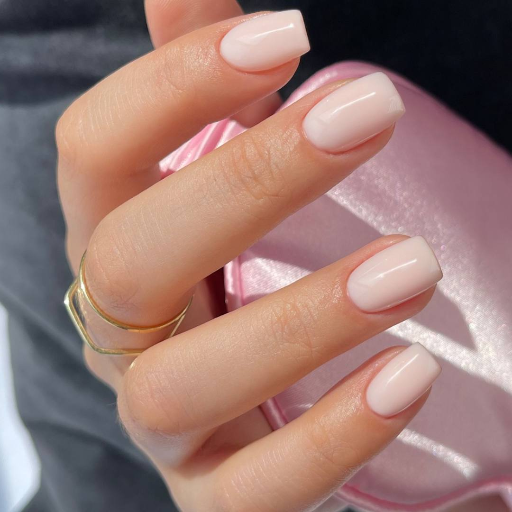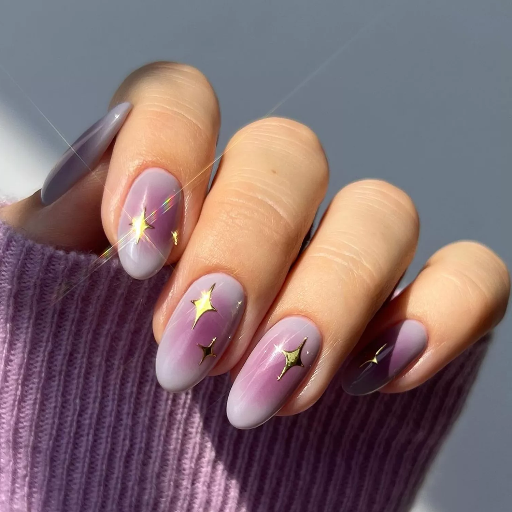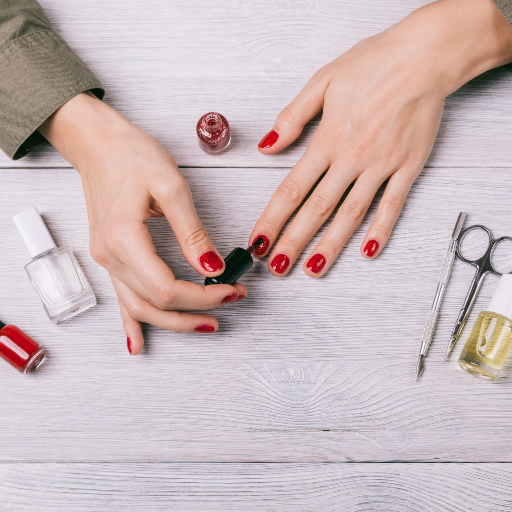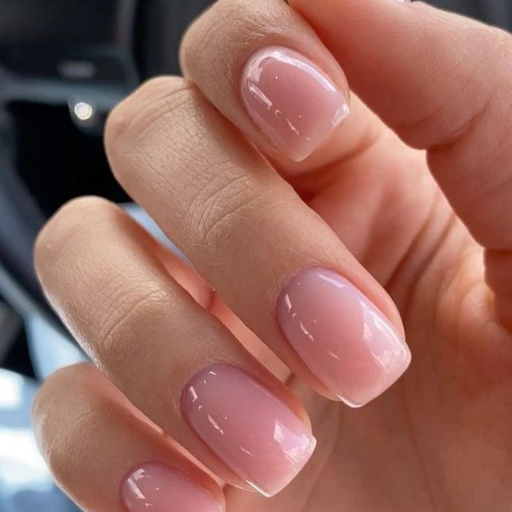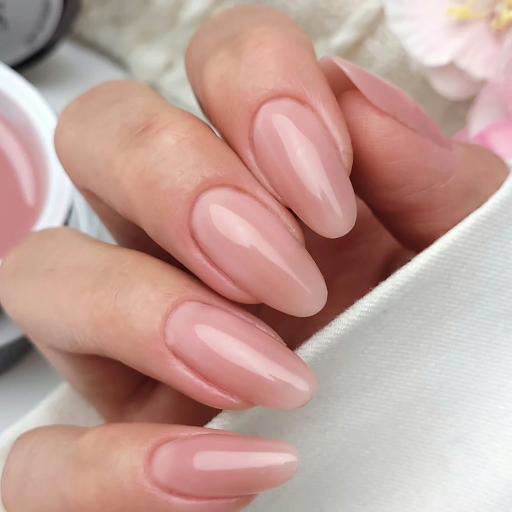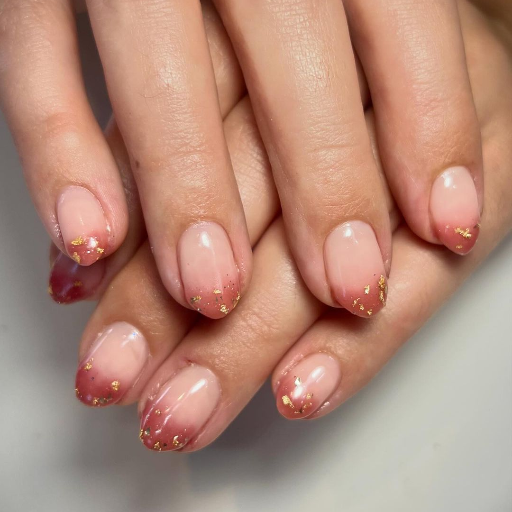To protect your skin from ultraviolet (UV) radiation, making the distinction between sunscreen and sunblock is a must. They are both meant for protecting the skin but there are great differences in how they function, the ingredients used, and the way of application. This article provides an extensive study on sunscreen vs. sunblock, their mechanisms of action, classification according to the degree of action towards ultraviolet radiations, as well as their effects. By the time you complete this guide, you will know very well what option suits you best regarding your skin, lifestyle, and needs, and thus be able to make the right choices towards skin health and general well-being.
What is the sunscreen and sunblock?

Sunscreen and sunblock are both shielding from the sun, however, they deal with the problem in different ways. Sunscreen, also known as a chemical filter, on the other hand, absorbs ultraviolet (UV) radiation and changes into heat which prevents the penetration of the skin. Active ingredients that are almost always incorporated include avobenzone, oxybenzone, and octisalate. On the contrary, sunblock serves to be a physical barrier, blocking UV rays from penetrating through the skin by reflecting or scattering them. Synthesized from minerals like zinc oxide or titanium dioxide, sunblock is rather thick in composition and thus gives a more instantaneous protective coverage. Both sun protection creams and ointments are indispensable shields against harmful UV rays but the composition and the functional characteristics of both serve distinctly different needs and preferences.
Understanding chemical sunscreen and its role
Through their active ingredients, avobenzone, octinoxate, and oxybenzone, which are carbon-based organic compounds, chemical sunscreens absorb ultraviolet radiation and turn it into heat energy that the skin then excretes. They function well for varying lengths of time and even though they may not be as effective as Zinc Oxide or Titanium Dioxide, products like salicylic acid are good for people with sensitive skin. Avobenzone is a carbon-chains molecule, which is highly effective at absorbing UVA rays while octinoxate primarily targets UVB rays. Chemical sunscreens are easily absorbed into the skin and do not leave a white cast when applied. Chemical sunscreens are much lighter than physical sunblock. However, these products do come with flaws such as negatively affecting the reefs or causing irritations on the skin. Even though these pesticides work perfectly across different skin tones, they function much more effectively when exposed to the sun for over 15 to 30 minutes before being applied, as most of their ingredients are designed to bond with or chemically interact with the skin. One major flaw of these products is organic carbon which is known to have an extremely negative effect on reefs however broad-spectrum pesticides do indeed seem to be the best solution.
How mineral sunscreen differs in composition
Sunscreens that are referred to as physical sunscreens consist primarily of active ingredients such as titanium dioxide and zinc oxide known as mineral sunscreens. Instead of absorbing potentially harmful UV rays, these active ingredients sit atop the skin’s barrier and scatter or reflect these rays – unlike chemical sunscreens. In the case of mineral formulations, they start to work immediately and are also less irritating, which makes such formulations ideal for most sensitive skin types. Furthermore, they do not include reef-damaging elements such as oxybenzone or octinoxate, which makes them more environmentally friendly. On the other hand, their formulations tend to be thicker and require a fair amount of transparent skin tone to cover up the pasty appearance. Fortunately, improvements in technology over the past few decades made this aspect less of an issue.
How do they protect your skin from UV rays?
Mineral sunscreens protect the skin by creating a physical barrier on its surface that reflects and scatters harmful ultraviolet (UV) rays, including both UVA and UVB radiation. The key active ingredients, zinc oxide, and titanium dioxide, are naturally occurring minerals that remain on the skin rather than being absorbed, effectively deflecting UV radiation before it can penetrate. Unlike chemical sunscreens that absorb UV rays and convert them into heat through a chemical reaction, mineral sunscreens offer immediate protection upon application and reduce the risk of irritation. This robust shielding mechanism makes them a reliable option for preventing sunburn, premature aging, and long-term damage like skin cancer.
How Does the Difference Between Sunscreen and Sunblock Affect Skin Protection?

Sunscreens and sunblocks have their distinctive features and methods in serving the purpose of skin protection from the harmful rays of the sun. UV radiation is transformed into heat and absorbed by the skin with the help of chemical filters in sunscreens. As a result, a ‘lightweight’ non-greasy makeup is produced which forms a sunscreen that is appropriate for day-to-day use. On the other hand, sunblocks are composed of historical constituents such as zinc oxide or titanium dioxide which are physical UV blockers and they change the way light penetrates the skin. Though sunblocks have the effect of instant wider UV protection, their thicker formulation may seem less appealing. So some people might or might not be able to use the former of the two if they have sensitive skin and would rather use the latter.
Comparing SPF Effectiveness in Both
In terms of the provision of UV protection by sunblocks and sunscreens, one critical point that must be made clear at the outset is that both products are rated according to SPF, which is the level of protection against sunburn or skin cancer-contributing UVB rays. Though both may have high SPF ratings, it is the formulation that determines the degree to which the product is expected to last as well as the extent of application.
Chemical lotions are broad-spectrum sunscreens containing UV absorbers, water resistant, and with non-greasy and lightweight formulations. They are, however, susceptible to disintegration from sweat, water or scorching sun making them ideal for children who require protected playtime but devoid of consistent application over time. Meanwhile, physical lotions containing zinc oxide or titanium dioxide can be applied widely and are also water-resistant while being chemically stable in the sun. Such products however are ideal for possible reapplication after swimming pools or beaches.
In the end, both products’ effectiveness relies on proper as well as timely application processes. Common consensus is the use of SPF 30 to 50 that would require to be applied at least every two hours or after coming in contact with water sources and all administrators need to adhere without providing room for errors.
Impact on Different Skin Types and Tones
Skin type and color can influence the ability to apply SPF products and reactions to them. High SPF becomes a must for individuals with fairer skin because they have a lower tolerance to damage caused by UV rays, such as sunburns, and even more lasting effects such as photoaging. High melanin content in dark-skinned individuals lowers their vulnerability but it does not provide full immunity against UV damage and hence sufficient sun coverage is still needed to limit the chance of having complications like skin cancer or hyperpigmentation. For people who tend to have sensitive or acne-prone skin, Physical sunblocks containing zinc oxide or titanium dioxide are generally preferred as they tend to be less irritating and pore-clogging. Also, newer formulations have been developed to accommodate darker skin tones which minimizes the white appearance that traditional formulations of sunscreens are associated with. It is best to use SPF products that are suitable for your skin type so that protection is maximized and irritation is minimized to encourage patient compliance.
Effectiveness against UVA and UVB Rays
Sunscreens can be classified both formulation-wise and action-wise: they can be thought of as organic and inorganic or physical or chemical respectively. Their main function is to protect the skin against the harmful effects of the sun’s ultraviolet radiation, which includes UVA and UVB, both of which play a detrimental role in the aging of the skin and also the development of skin cancer. Broad-spectrum sunscreens are designed to protect the skin against both kinds of radiation. When a physical sunscreen is applied, inorganic substances including zinc oxide and titanium dioxide work to reflect UV rays, producing a physical barrier that shields against burning sun rays. Contrarily, avobenzone, and octinoxate are the active substances in chemical sunscreen that are used to absorb and neutralize UV rays. The figures of SPF rating concerning UVB intern and “PA” or “Broad Spectrum” concerning protection against type lines of UV rays play a crucial part in defining how effective a given sunscreen is. While applying sunscreen, the optimal technique with the right dosage is key especially if there is direct sun exposure, and reapplying every two hours enhances the effectiveness.
Which is Better: Sunscreen vs Sunblock?

Choosing between sunscreen and sunblock is mostly a matter of personal requirements and wishes. Sunscreen, also called a chemical UV filter, penetrates the skin whilst absorbing the UV light cutting off exposure by converting it into heat. With that being said, they are more suited for everyday use among less sensitive skin types as there are a lot of easy-to-apply lotions available on the market. In contrast, Sunblock uses zinc oxide or titanium dioxide to block the UV radiation so it can be seen as more physical in that sense. It may however be a better choice for people with more sensitive or prone to acne as the formulation is milder and stronger than the normal chemical sunscreen. All of these work well as long as they are applied correctly however whether they are better hinges on where used, activity undertaken as well as skin type.
Factors to consider based on skin type
Written in the context of skin type selection when comparing sunblock and sunscreen following must be considered:
Sensitive Skin: Consult your doctor or skin specialist to aid you in determining whether you need sunblock or sunscreen, as people with sensitive skin may benefit greatly from sunblock due to its mineral-based substance formulation which is less likely to irritate. Sunscreen components including zinc oxide and titanium dioxide are mild on the skin and especially suitable for people most likely to experience a burning sensation or an allergy response.
Oily and Acne-Prone Skin: In this sense, non-comedogenic sunscreen is ideal for oily or acne-prone skin, consider dermally active agents specifically designed to non-clog pores. Oftentimes, lightweight, gel-based chemical sunscreen works in such cases, while certain mineral sunblock matte finish can work too.
Dry Skin: For dryness-prone skin, this type of skin would benefit more from moisturizing sunscreens with added hydrating ingredients such as hyaluronic acid or glycerin. Such formulations are helpful in halting moisture loss while proteins capable of blocking UVA and UVB rays from penetrating through the skin are being used effectively.
Combination Skin: People with mixed skin should opt for combination sunscreen that hydrates drier sections of skin and has a light texture for oily areas. Such products are available in modern times.
Alternatively, before applying any new beauty product, considering that skin varies from person to person, conduct a patch test of the product. If in doubt, consult your doctor or skin specialist for assistance on the best available product suitable for your skin type.
Addressing Skin Irritation and Sensitivities
Irritating sensations and hypersensitivity to skincare, climatic exposure, or skin diseases like eczema and rosacea can be quite common. Minor irritations can greatly ease symptoms by changing to gentle, low-active ingredients and fragrance-free products. Products that include Aloe Vera, colloidal oatmeal, or ceramides which will assist in skin barrier restoration and reduce the chances of flare-ups should be sought after.
It is very important to perform patch tests- apply a small quantity of the intended product to a discreet spot and wait for 24-48 hours before applying the product to the entire area. Persistent sensitivity or an extreme reaction such as red-spotted skin, swelling, and discomfort requires a visit to a dermatologist. Some products recommend avoiding causing allergies, some offer medicated solutions and others manage to remove allergens. Further protecting the skin barrier from irritants can be achieved by applying sunscreen and humectants regularly.
How environmental conditions influence choice
Environmental factors are important considerations in selecting skincare products or treatments. Humidity, temperature, and air quality determine how the skin behaves or what it requires. In areas of high humidity, the skin is likely to produce a lot of oil which would result in the use of lighter and non-comedogenic products. Areas of low humidity in dry climates on the other hand would remove moisture from the skin which would require the use of heavier emollient-based moisturizers. High or low temperatures also impact the skin barrier, making it important to incorporate ceramide-containing products that can build a stronger barrier. Exposure to air pollutants on the other hand results in exposure to free radicals that speed up skin aging; hence requiring serums such as vitamin C or E which are known to be rich in antioxidants. In that regard, taking into account the environmental interactions with the skin while designing skin care products and routines would foster proper protection and care of the skin.
How to Choose Between Sunscreen or Sunblock for Optimal Sun Protection?

It is always good to have an idea about the working mechanism of the product you are planning to use. Also, the choice comes down to your skin type, protection needs, and personal choices. As sunscreen is an active ingredient containing ‘chemical’ components such as avobenzone or oxybenzone that absorb harmful rays before they reach absorption through the skin, a sunblock prevents it from penetrating. Meanwhile, sunblock, applied as a ‘physical’ protection layer, comprises titanium dioxide or zinc oxide, which sits on the skin and reflects UV rays away.
People with sensitive skin or people suffering from rosacea could use sunblock as it is less irritable and smoother on the skin. Others daily looking for sunscreen under makeup would appreciate a slightly harsher texture as it hides the white invisible cast as other makeup products. The most important element you want to look at, no matter the option you choose, is broad-spectrum coverage and an SPF of at least 30. Consistent application throughout the day is the key to ensuring protection.
Understanding sun protection factor ratings
The effectiveness of UVB protection by sunscreen is quantified using a measure called the Sun Protection Factor (SPF) rating. Sunburn with the help of UVB rays eventually leads to skin cancer. A certain SPF level indicates an increase in the time skin curved with sunscreen gets sun exposure before the skin is burnt. For instance, for a certain period, people with a 30 rating in SPF get around a 3.30-time extension because, for this rating of SPF, one can expect to cover around 97% of the UVB radiation. In another instance, SPF 50 would cover around 98% so this ranking is linear but there is still a sign from the warning that no sunscreen covers 100%.
SPF should not be regarded as a measure aiding in the reduction of aging, and deeper skin damage because it does very little to protect from UVA rays. For that reason, the use of a broad spectrum of sunscreen protects the skin perfectly from UVA and UVB rays. When applying sunscreen, one should ensure to use enough to cover the whole body and reapply it for optimum protection every two hours. An important tip for best results: use around an ounce of sunscreen which is equivalent to a shot glass.
Balancing sun protection with cosmetic concerns like white cast
It is important to consider features such as the formulation and ingredients of the sunscreen to be able to protect oneself from the sun without any complications such as the white cast as a result of the sunscreen. White residue is more common for mineral sunscreens, which mostly consist of zinc oxide or titanium dioxide, due to the physical barriers they create on the skin. However, modern formulations often incorporate micronized or tinted versions of these minerals to reduce the amount of white cast to a degree that is suitable enough while ensuring that the sunscreen provides sufficient cover from UV rays. Also, tans or other skin oils create a barrier that allows for a smooth application which is not the case with chemical sunscreen. For darker descents seeking a remedy, hybrid sunscreens may be the best solution as they combine mineral and chemical elements which makes it easier to apply. Looking for chemical sunscreen while taking into consideration consumer reviews and dermatologist recommendations would assist in finding a suitable one for you.
Frequency of Reapplication and Its Importance
The dosages of sunscreen used during the day are crucial to determine its effectiveness and efficiency in preventing UV rays from penetrating the skin. According to dermatologists, sunscreen should be reapplied every two hours especially when engaging in activities that require prolonged exposure to the sun as it diminishes in strength because of either sweat, natural exposure, or water. This rule should be followed despite the type of sunscreen or its SPF factors. Moreover, water-resistant sunscreen also contains emulsifiers and stabilizers that wear off after swimming or sweating, emphasizing the importance of reapplication after such activities. Otherwise, the neglect of reapplication may cause the sunscreen to weaken, leaving the skin exposed to sunburns and adverse long-term impacts such as skin cancer due to skin damage and aging. Continuity in the application or dosage of sunscreen is key to ensure proper defense from the sun.
How Can Sunscreen and Sunblock Help Prevent Skin Cancer?

The use of sunscreen and sunblock is highly protective against skin cancer because they serve as a barrier against harmful ultraviolet (UV) radiation. Broad spectrum sunscreens protect from both UVA rays, which cause skin aging and damage at the cellular level, and UVB rays that mainly cause sunburn and do some level of skin DNA injury which eventually leads to skin cancers such as melanoma, basal cell carcinoma and squamous cell carcinoma. Synthesis of melanin pigments acts as a protective mechanism of the skin to safeguard itself from further penetration of UV rays. Therefore, sunscreen and sunblock products assist in hindering those DNA alterations that stimulate unusual cell eruptive growth, which could lead to skin cancer development. These products, when applied and re-applied intermittently, can ensure protection against sun rays which makes them an integral part of an overall sun safety plan.
Role of UV radiation in skin cancer development
Skin cancer is a major health problem and one of the causes is continuous exposure to ultraviolet radiation that primarily comes from the sun. Ultraviolet radiation is divided into three types namely; UVA, UVB, and UVC according to the wavelengths. UVC is completely filtered through the ozone layer, subsequently allowing only UVA and UVB rays to reach the surface of the Earth. These rays penetrate the skin and create even more damage. Due to mutagenic effects, sunburns that are linked with exposure to UVB rays cause the DNA of the skin cells to directly damage normal cell repair functions. The damage provided to the structure of the DNA by UVA rays can trigger a cascade of damage that is performed on the structure of DNA through damaging ROS even tho they are not as powerful as UVB rays. These types of damage can in turn lead to mutations within the tumor suppressor genes such as TP53, triggering the development of skin cancers, even melanoma, squamous cell carcinoma, and basal cell carcinoma. Furthermore, if one does not take protective methods before being exposed to sunlight increases his or her chances of skin cancer. To stop the incident of skin cancer one should implement sun protection such as closing the exposed areas of the body with clothes, applying sunscreens on the exposed areas of the body, and not being in the sun during maximum UV generation times.
How sunblock reflects versus sunscreen absorbs UV
The primary distinction between sunblock and sunscreen comes from the active ingredients used in their formulations. Sunblock, which usually contains titanium dioxide or zinc oxide, is known as a physical blocker. To protect the skin from harmful rays, this product does not allow a single ray of UV radiation to reach the surface. In contrast, chemical compounds found in sunscreens, such as avobenzone, oxybenzone, and octinoxate, allow the transmission of UV radiation and transform the heat into minimal quantities before it could cause injury. The difference is that once applied, sunblock remains effective immediately as it protects against UVA and UVB; with sunscreen, it is recommended to remain longer outdoors for at least fifteen to thirty minutes before the application. If applied appropriately, both sunblock and sunscreen offer ideal protection from ultraviolet radiation; although the formulations and mechanisms of action are different allowing for different preferences and requirements.
Importance of Broad-Spectrum Sunscreen in Protection
Sunblock that is labeled as ”broad-spectrum” is critical in providing adequate protection to the skin because it protects from both UVA and UVB. UVA rays penetrate deeply into the skin leading to skin aging, wrinkles, and the likelihood of skin cancer. At the same time, UVB targets the surface layer of the skin causing sunburn, and is also another dangerous contributor to skin cancer. With the use of broad-spectrum formulations, both of these cancer-causing threats are avoided hence reducing the chances of the skin aging from the cumulative effects of the sun.
It has also been established that consistent application of broad-spectrum sunscreen prevents photoaging and hyperpigmentation i.e. an uneven skin tone and texture. To do this make sure that the SPF 30 is the bare minimum that is applied, apply sunscreen in excess, and repeat the application at least every two hours in the case of extended sun exposure. This strategy significantly lowers the threat of skin cancer including melanoma as well as non-melanoma skin cancers and so such an application should be a part of an individual’s night and day skin care routine.
References
Frequently Asked Questions (FAQ)
Q: What’s the difference between sunblock and sunscreen?
A: The main difference between sunblock and sunscreen lies in how they protect the skin from harmful UV rays. Sunblock, often referred to as physical sunscreen, contains ingredients like zinc oxide or titanium dioxide that physically block and reflect the sun’s rays. Sunscreen, on the other hand, contains chemical ingredients that absorb UV rays before they can penetrate the skin.
Q: How does sunblock protect the skin?
A: Sunblock protects the skin by sitting on top of it and physically blocking the sun’s rays. Ingredients like zinc oxide and titanium dioxide are used to reflect and scatter harmful UV rays away from the skin surface, preventing sunburn and sun damage.
Q: Can sunscreen cause skin irritation?
A: Sunscreen can cause skin irritation for some individuals, especially those with sensitive skin. This is because chemical ingredients in sunscreen absorb into the skin, which can sometimes lead to allergic reactions or irritation. It’s important to choose a sunscreen suitable for your skin type.
Q: Is physical sunscreen better for sensitive skin?
A: Yes, physical sunscreen is often recommended for sensitive skin because it contains ingredients like zinc oxide and titanium dioxide that are less likely to irritate. These ingredients sit on top of the skin rather than absorbed into it, reducing the risk of adverse reactions.
Q: Why does sunblock sometimes leave a white cast on the skin?
A: Sunblock can leave a white cast on the skin because of the physical ingredients, like zinc oxide and titanium dioxide, which are opaque and can appear white when applied to the skin. This is more noticeable in darker skin tones.
Q: Which offers better protection, SPF 30 or SPF 50?
A: SPF 50 offers better protection against harmful UV rays compared to SPF 30. SPF 50 blocks about 98% of the sun’s rays, while SPF 30 blocks about 97%. However, both provide significant protection, and other factors like reapplication frequency and amount used are also important.
Q: Should people with acne-prone skin use sunscreen?
A: Yes, people with acne-prone skin should use sunscreen to protect against harmful UV rays and sun damage. Look for non-comedogenic and oil-free formulas that won’t clog pores or exacerbate acne.
Q: Can sunblock and sunscreen prevent skin cancer?
A: While no product can guarantee 100% prevention of skin cancer, both sunblock and sunscreen significantly reduce the risk by protecting the skin from harmful UV radiation, which is a major cause of skin cancer. Regular use and proper application help provide the best protection.
Q: How often should you apply sunscreen to protect against sun exposure?
A: Sunscreen should be applied generously at least 15 minutes before sun exposure and reapplied every two hours, or more often if swimming or sweating. This helps maintain effective protection against harmful UV rays.
Q: How can I choose between sunblock and sunscreen for my skin type?
A: To help you choose between sunblock and sunscreen, consider your skin type and specific needs. For sensitive or acne-prone skin, physical sunblocks with zinc oxide or titanium dioxide may be preferable. For darker skin tones, chemical sunscreens may blend better and avoid a white cast. Always check labels for additional properties like water resistance and SPF level.


